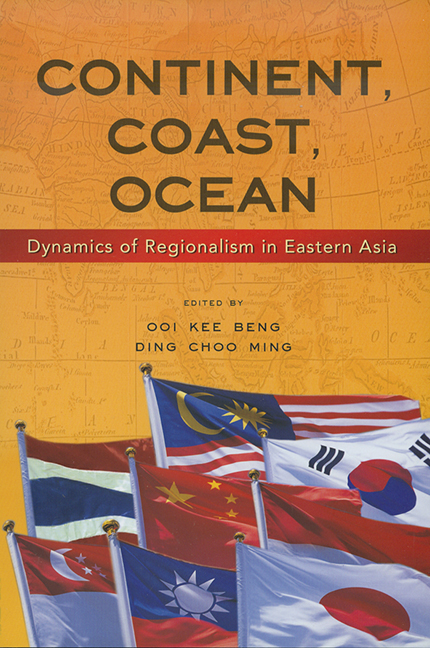Book contents
- Frontmatter
- Contents
- Foreword by Shamsul A.B.
- Contributors
- Introduction
- PART ONE PUTTING JAPANESE IMPERIAL HISTORY TO REST
- PART TWO THE ECONOMICS OF REGIONAL INTEGRATION
- PART THREE INTER-REGIONALISM AND REGIONALISM
- 5 Alliance and Arms: A Study of the Change in U.S. Arms Transfer to East Asian Allies, 1950–2001
- 6 A Multicultural European Union and Its Implications for Asia
- 7 The Future Prospects of Multilateralism in Southeast and East Asia
- 8 The Historical and Cultural Legacy of Relations between Southeast Asia and East Asia, with Special Reference to Malaysia
- PART FOUR NEW KNOWLEDGE, NEW PROBLEMS, NEW SOLUTIONS
- Index
6 - A Multicultural European Union and Its Implications for Asia
from PART THREE - INTER-REGIONALISM AND REGIONALISM
Published online by Cambridge University Press: 21 October 2015
- Frontmatter
- Contents
- Foreword by Shamsul A.B.
- Contributors
- Introduction
- PART ONE PUTTING JAPANESE IMPERIAL HISTORY TO REST
- PART TWO THE ECONOMICS OF REGIONAL INTEGRATION
- PART THREE INTER-REGIONALISM AND REGIONALISM
- 5 Alliance and Arms: A Study of the Change in U.S. Arms Transfer to East Asian Allies, 1950–2001
- 6 A Multicultural European Union and Its Implications for Asia
- 7 The Future Prospects of Multilateralism in Southeast and East Asia
- 8 The Historical and Cultural Legacy of Relations between Southeast Asia and East Asia, with Special Reference to Malaysia
- PART FOUR NEW KNOWLEDGE, NEW PROBLEMS, NEW SOLUTIONS
- Index
Summary
THE CHARACTER OF EUROPE
Europe is the cradle of Western civilization. Ancient Greece is normally considered to have laid the foundations of European civilization. Later on, the Roman Empire and its Christianized civil society exercised a strong influence on all European peoples. Despite experiencing the thousand-year long Dark Ages, Europe still emerged by the time of the Renaissance as the most advanced civilization in the world. With the Enlightenment, Neo-Platonism and industrialization, the West took shape. European cultures grew in confidence and came to display unprecedented hegemonic power throughout the world.
However, in the aftermath of World War I, European societies entered a negative trend, as its citizens became more and more distrustful of inherited values and beliefs. Oswald Spengler labelled this the “Decline of the West”. Nevertheless, after 1945, Western Europe gradually rebuilt itself into a highly integrated and cohesive grouping of economies and peoples.
PEACE AND EUROPEAN UNION
For centuries, Europe was the scene of frequent and bloody wars. Between 1870 and 1945, France and Germany went to war against each other three times, with terrible loss of life. After World War II, some visionary European leaders became convinced that the only way to secure lasting peace between their countries was to unite them economically and politically. The French Foreign Minister, Robert Schuman, proposed integrating the coal and steel industries of Western Europe. As a result, in 1951, the European Coal and Steel Community (ECSC) was set up with six members: Belgium, West Germany, Luxembourg, France, Italy and the Netherlands. The power to make decisions about the coal and steel industry in these countries was placed in the hands of an independent, supranational body called the “High Authority”. Jean Monnet was its first president.
The ECSC was such a success that, within a few years, these same six countries decided to integrate other sectors of their economies. In 1957 they signed the Treaty of Rome, creating the European Atomic Energy Community (EURATOM) and the European Economic Community (EEC) in the process. The member states set about removing trade barriers between themselves and forming a “common market”. In 1967 the three European communities were merged into one. From that point on, there was one single Commission and one single Council of Ministers with a directly elected European Parliament. From then on, it was called the “European Community” or “European Communities” (EC).
- Type
- Chapter
- Information
- Continent, Coast, OceanDynamics of Regionalism in Eastern Asia, pp. 131 - 138Publisher: ISEAS–Yusof Ishak InstitutePrint publication year: 2007



